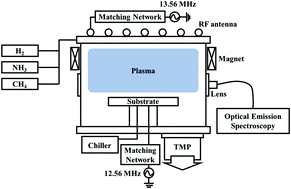Reactive ion etching of an ovonic threshold switch (OTS) material using hydrogen-based plasmas for non-volatile phase change memories
Abstract
Etch characteristics of ovonic threshold switch (OTS) materials composed of Ge–As–Te for a phase-change random access memory (PCRAM) has been investigated using reactive ion etching via hydrogen-based gases such as H2, CH4, NH3, CH4 + H2, and CH4 + NH3. Among the investigated hydrogen-based gases, NH3 showed the highest etching rate of about 0.52 nm s−1, but the formation of nitride compounds and the increased roughness were observed on the OTS surface by nitrogen. The use of other hydrogen-based gases such as CH4 and CH4 + H2 showed the deposition and low OTS etch rate, respectively, due to the presence of carbon in CH4. Even though H2 showed the better etch characteristics due to the no surface residues or compounds on the OTS surface related to carbon or nitrogen in the etch gases, the best OTS etch characteristics such as the second highest etch rate of 0.45 nm s−1, the lowest surface roughness of 0.21 nm, and no surface residues or compounds were observed with CH4 + NH3 due to the removal of carbon and nitrogen on the surface by the formation of volatile CN compounds while maintaining a high hydrogen atomic concentration in the plasma.



 Please wait while we load your content...
Please wait while we load your content...